Christmas! For many people it conjures up images of snowy landscapes, people bundled up against the cold, fires crackling away in fireplaces, and creches with the Holy Family surrounded in a manger by animals and the Three Wise Men, with an Angel and Star above.
Of course, in different parts of the world, and in different cultures, you will find variations of the common theme, and here in Mexico that is no different.
Halfway down the Pacific coast of Mexico, you will only find snow on the top of our inactive volcano when the temperature drops. Second, what would any holiday or celebration be here without firecrackers and fireworks. Beginning around the time of the celebrations of the Virgin of Guadalupe, there was a tent set up to satisfy everyone’s needs for pyrotechnics.
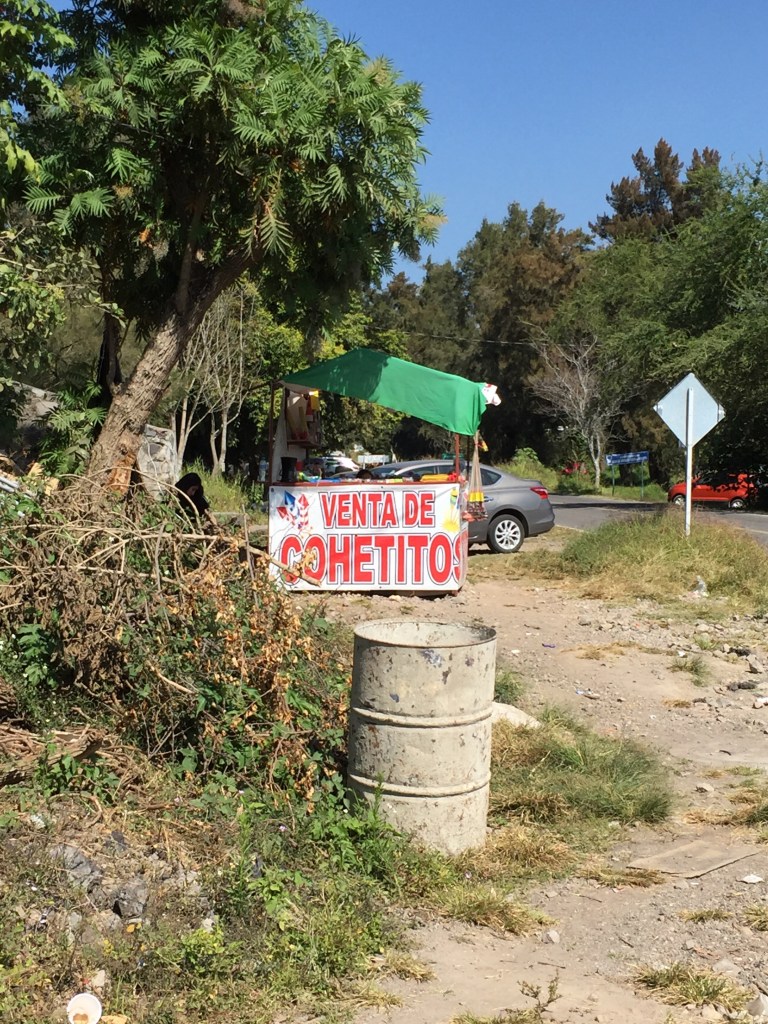

And given how everyone, including children, take part in setting them off in the streets, I am surprised that I have not heard of anyone blowing off or burning their hands or faces.
As in the United States, we are beginning to see Christmas decorations way before we should be seeing them. I believe this year, we started seeing them the end of October, beginning with a great big decorated and lit Christmas tree at the entrance to Sears in the Zentralia mall in Colima.
Closer to Christmas, after the celebration of the Virgin of Guadalupe (December 12th), lights and decorations started to go up on the houses and our town square,

And I did my part with a wreath on my door and outside my gate, a tiny bonsai-sized Christmas tree, decorations on my porch and fruit trees and lights hung from my car port.
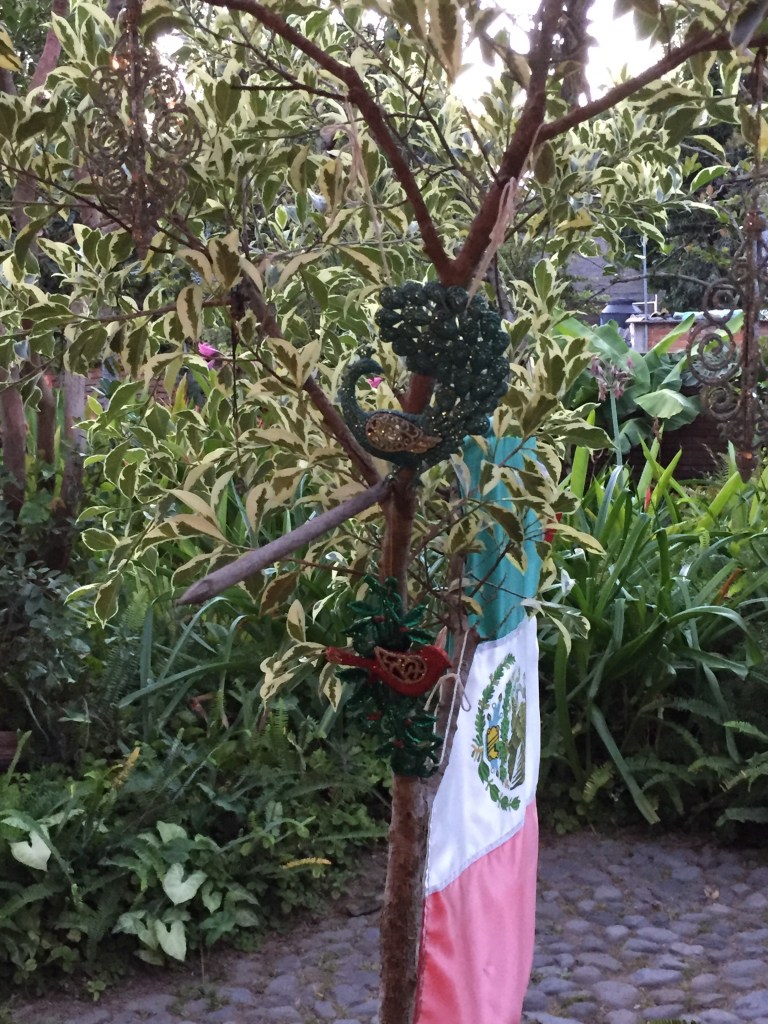
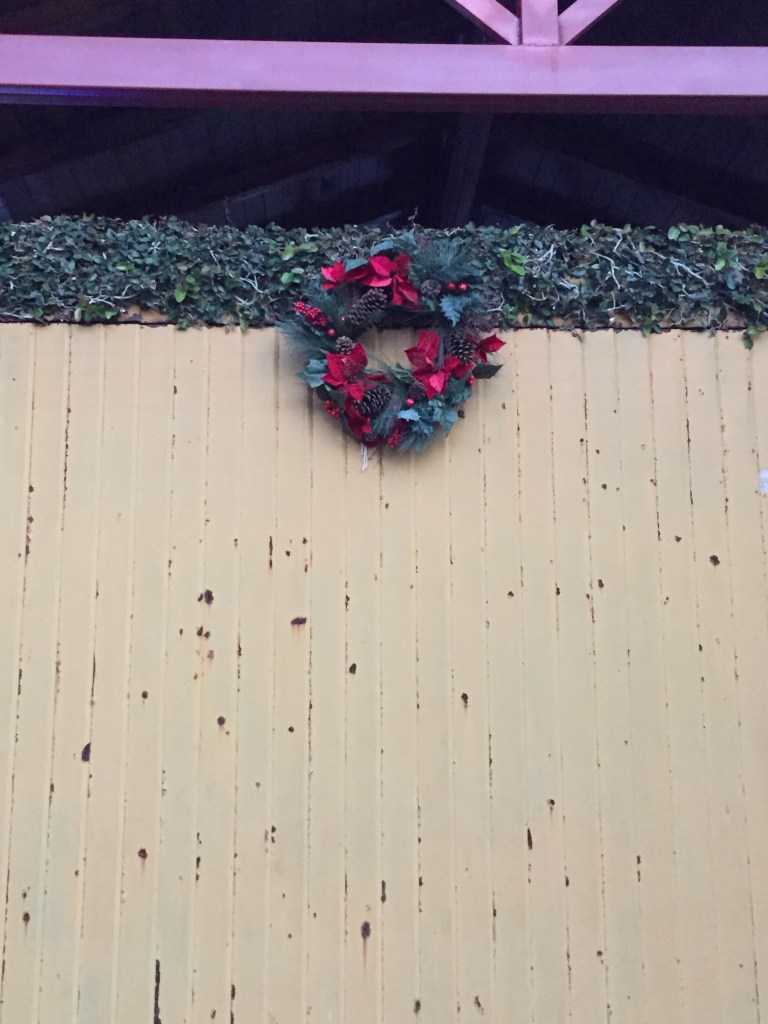
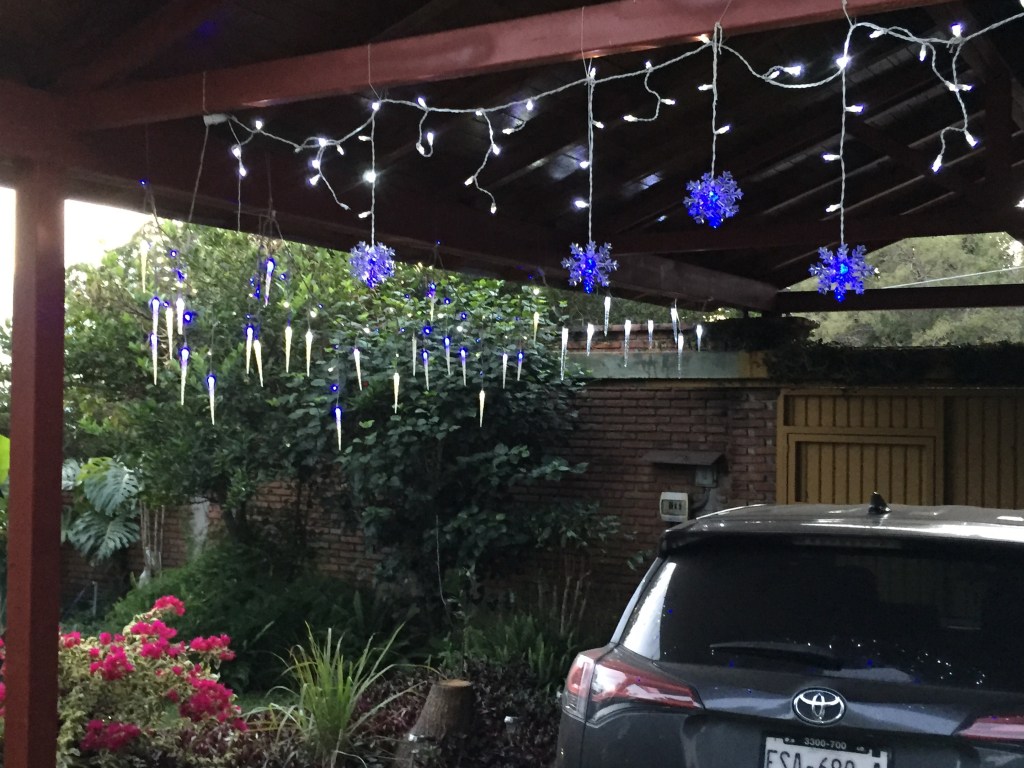

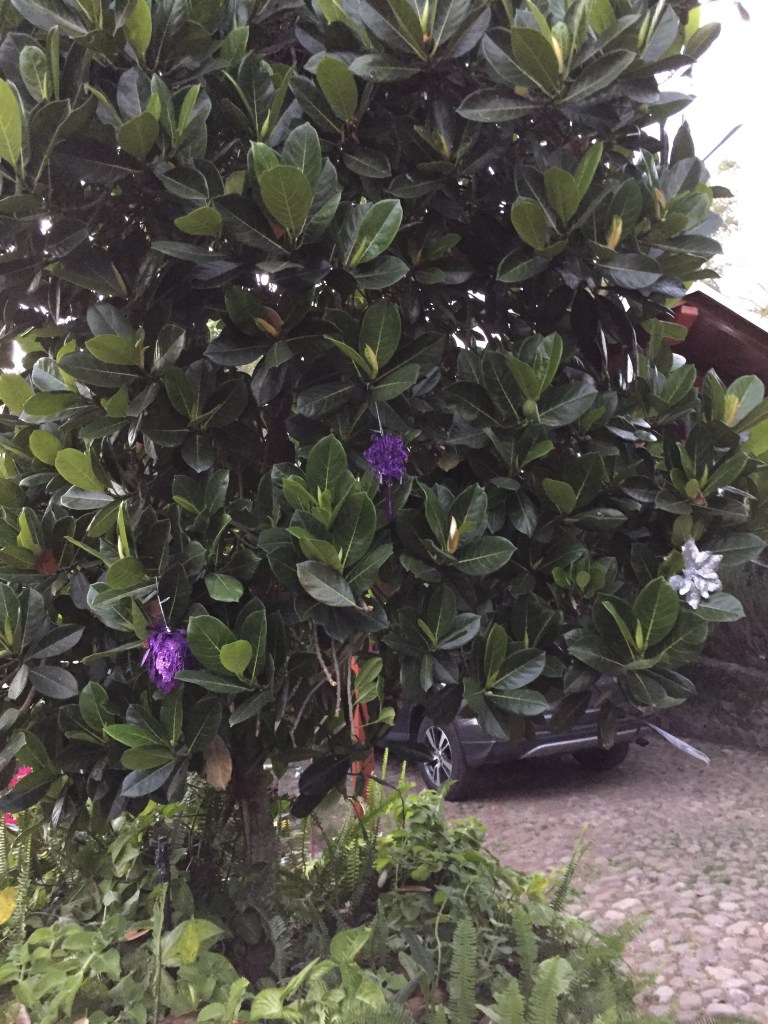
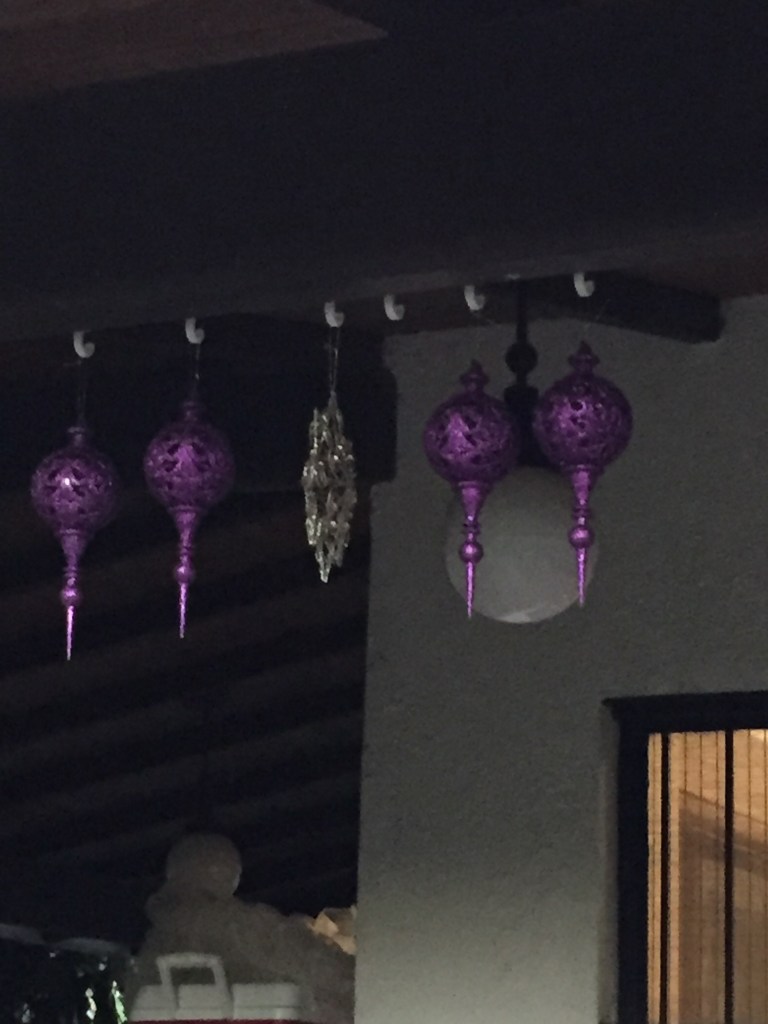
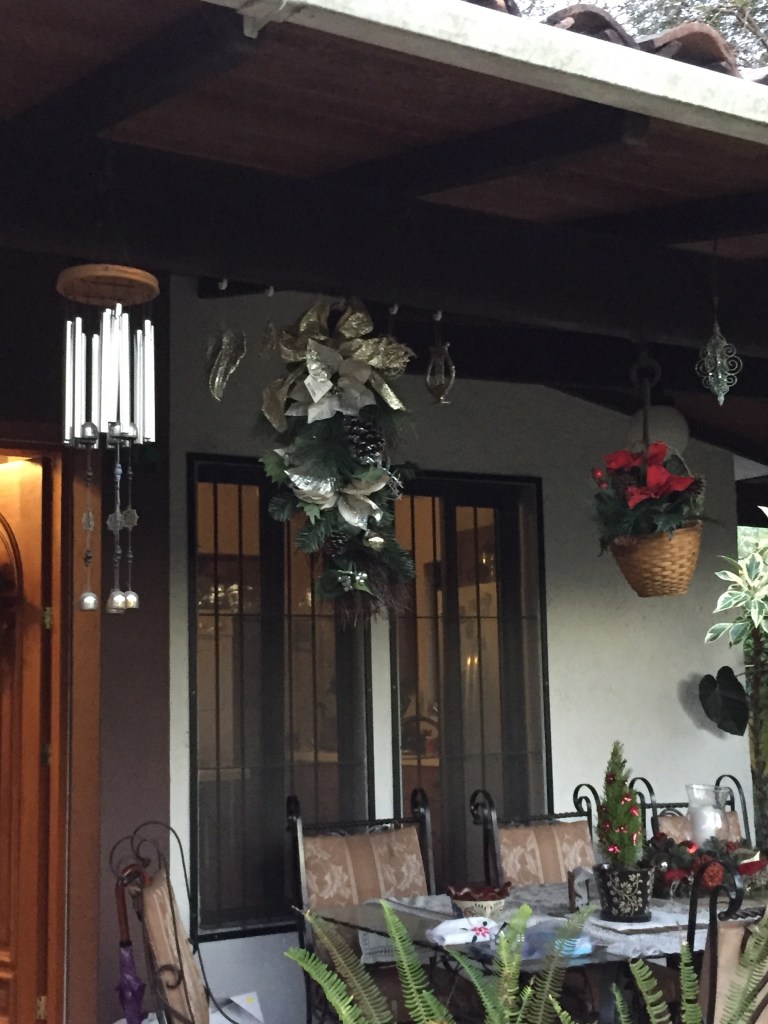
One difference from Christmas in the U.S. is that, since December 25th is Jesus’ birthday, in the depictions of the Holy Family, Baby Jesus is kept covered until after midnight on December 24th.

In our little village of about 1500 people, we have two Catholic Churches and one 7th Day Adventist church. Both Catholic churches were being readied for Christmas mass, the evening of December 24th, also known as Noche Buena.
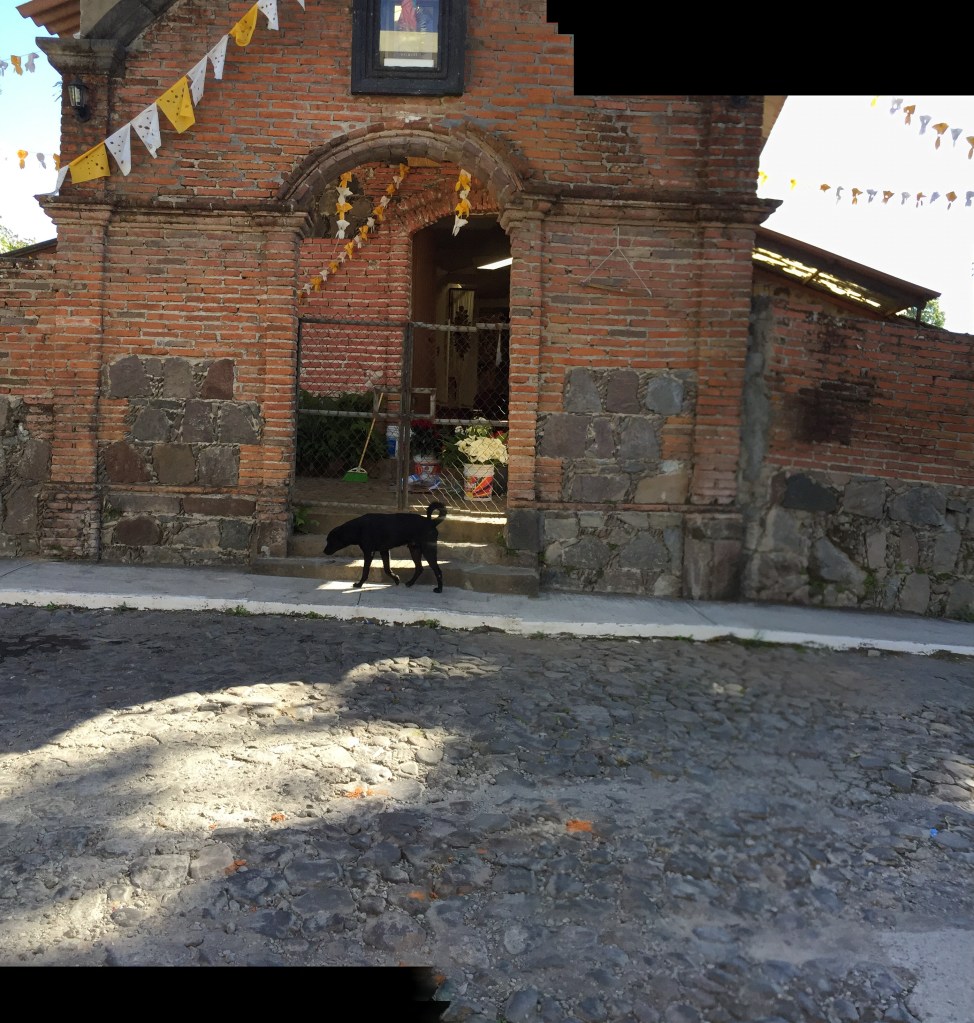

I was told by my friend Lourdes that Mass would be at 6pm, but I found both churches empty when I arrived at that time.

I asked two different people in the street and one woman told me that Mass would start at 7pm and another told me 8pm. I called Lourdes, who informed me that the priest would be late because he was performing a wedding.
I consoled myself with the fact that the church bells always ring a half hour before the Mass begins, so I went to a neighbor’s house and then my own house to wait. And at 7:30pm, the church bells started to ring.
Now the problem was – in which church was the Mass? So I began by going to the church closest to my house and that happened to be the correct one. (It wouldn’t really matter much if I’d picked the wrong one first as the two churches are one block from each other on parallel streets).
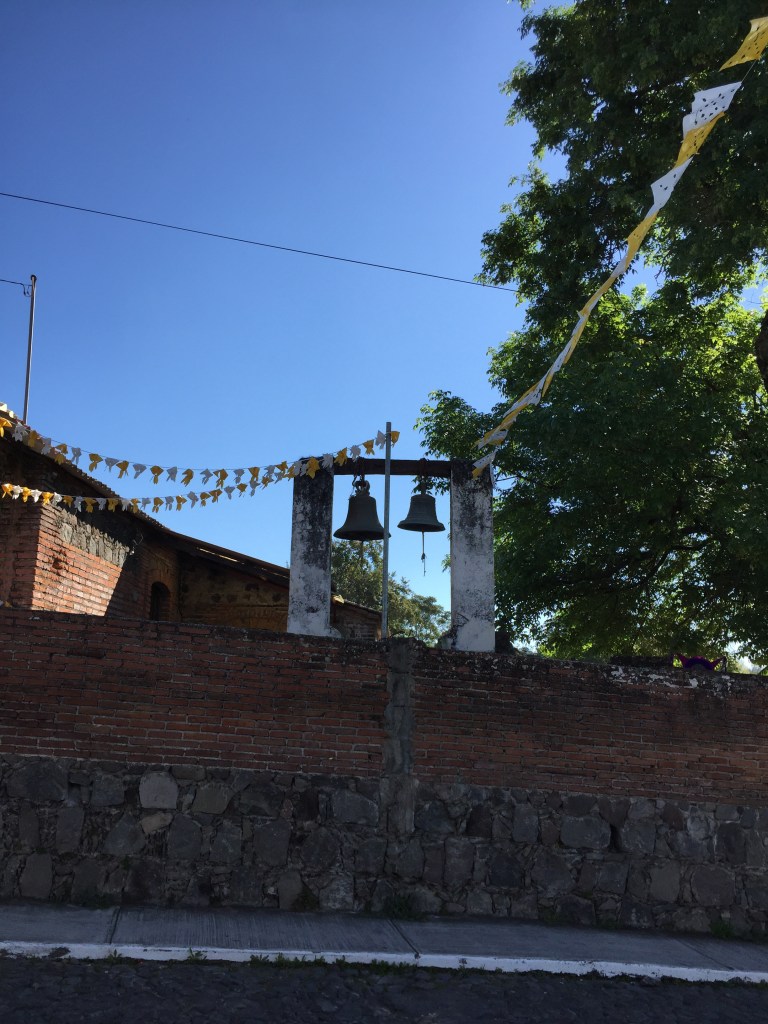
And so I entered the church with my neighbor and before very long it was packed with the citizens of Cofradía.
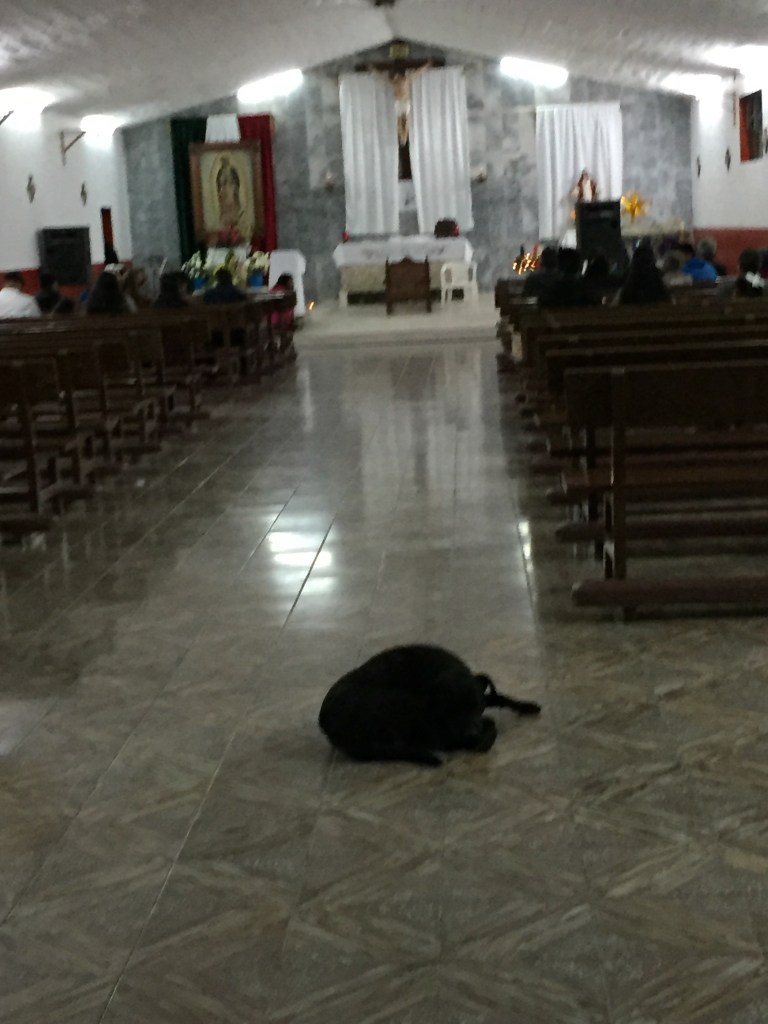
Once we were seated, there was a procession of a girl dressed as an angel and Pastores coming in dressed in various costumes and carrying banners. After the Mass, two of the Pastores were holding dolls depicting Baby Jesus and the parishoners went forward, kissed one of them and then exited the church.

After Mass, I celebrated at Lourdes’ house with her family. We had a nice meal of stuffed turkey, salad, mashed white potatoes, lots of wine and my contribution – mashed camote (a Mexican version of the sweet potato) with butter and nutmeg. We exchanged gifts and I was home by midnight (the advantage of living only a few houses down the street).
Of course, there were also fireworks after Mass, continuing even now, the end of Christmas day.
Before going to bed, I did take the cover off Baby Jesus, as tradition dictates.

In the morning, I was fortunate to witness another tradition of the area with which I had not been familiar. I went to Lourdes’ house in the morning for coffee, and after a while, she said Los Pastores were coming. I went out to her porch and saw a parade of people coming down the street singing.
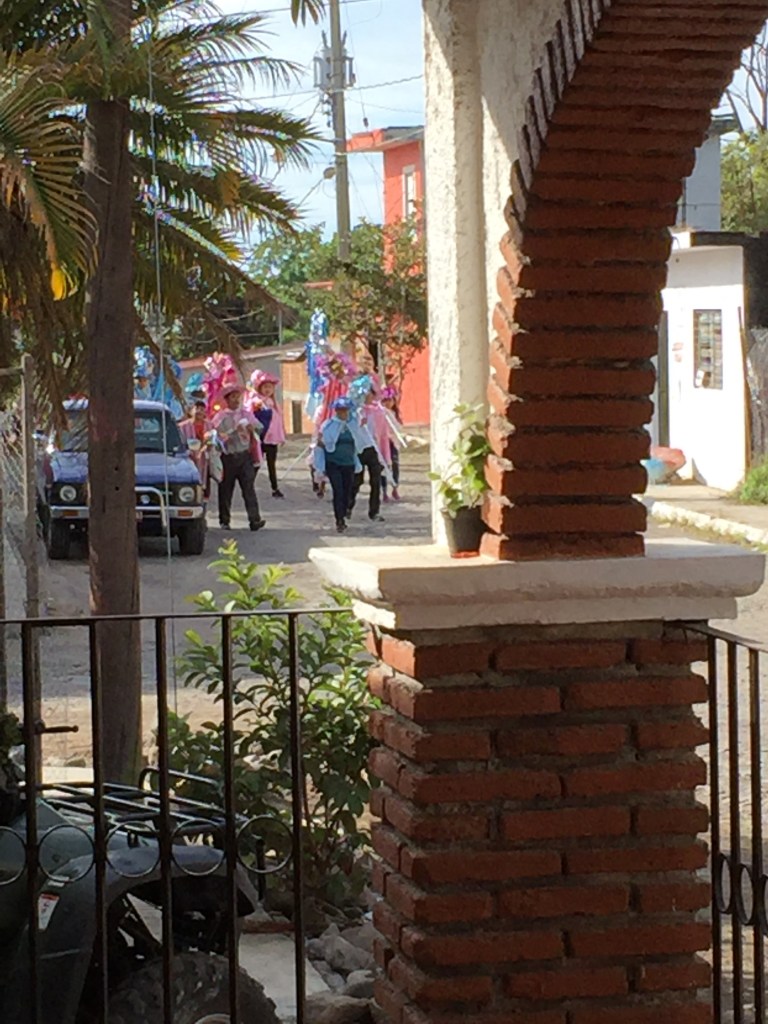

They turned the corner and then came back around, passing the house, but said they would come to Lourdes’ house after they had been to the others.
What happens is that people bring out their Baby Jesus dolls/statues and Los Pastores will sing in front of them about the joy of the birth of Jesus. And so Lourdes had her Baby Jesus brought out to the porch and we waited.

And then they came back and began their song:
As you can hear at the end of the video, the “priest” also says “Merry Christmas” and Lourdes’ husband Alfonso says “See you later.” No matter how good my Spanish becomes, I will never be mistaken for a Mexican. My face immediately gives it away. Some Mexicans will speak Spanish to me to see how well I speak, and some will either want to practice their English or be polite and immediately start speaking English, even at times when I WANT to speak Spanish.
Well, we have come to the end of my Christmas story. For all of you who celebrate Christmas, I wish you a very Merry and Blessed Christmas, and for those of you who have other religions and traditions, I wish you a Blessed Holiday Season.
Until next time…….





























